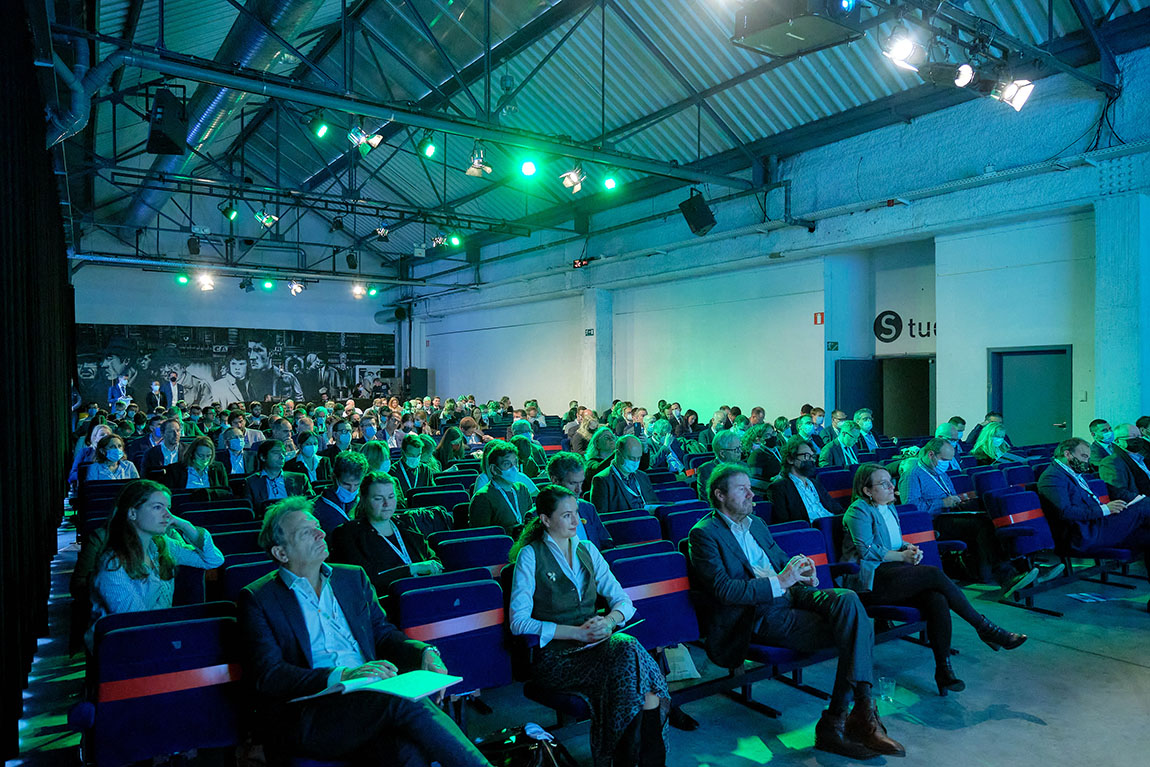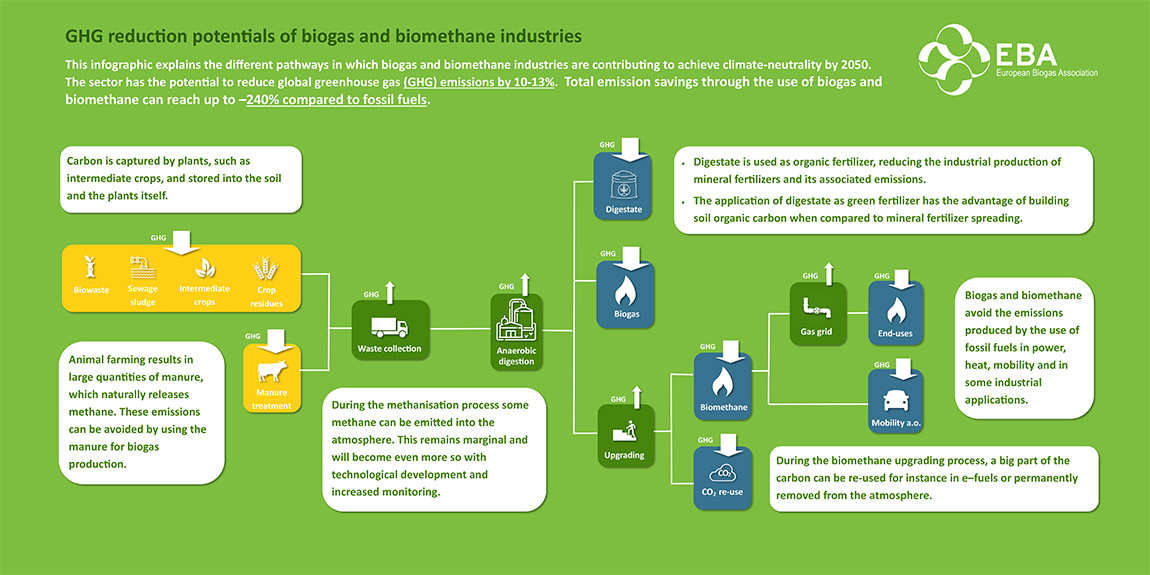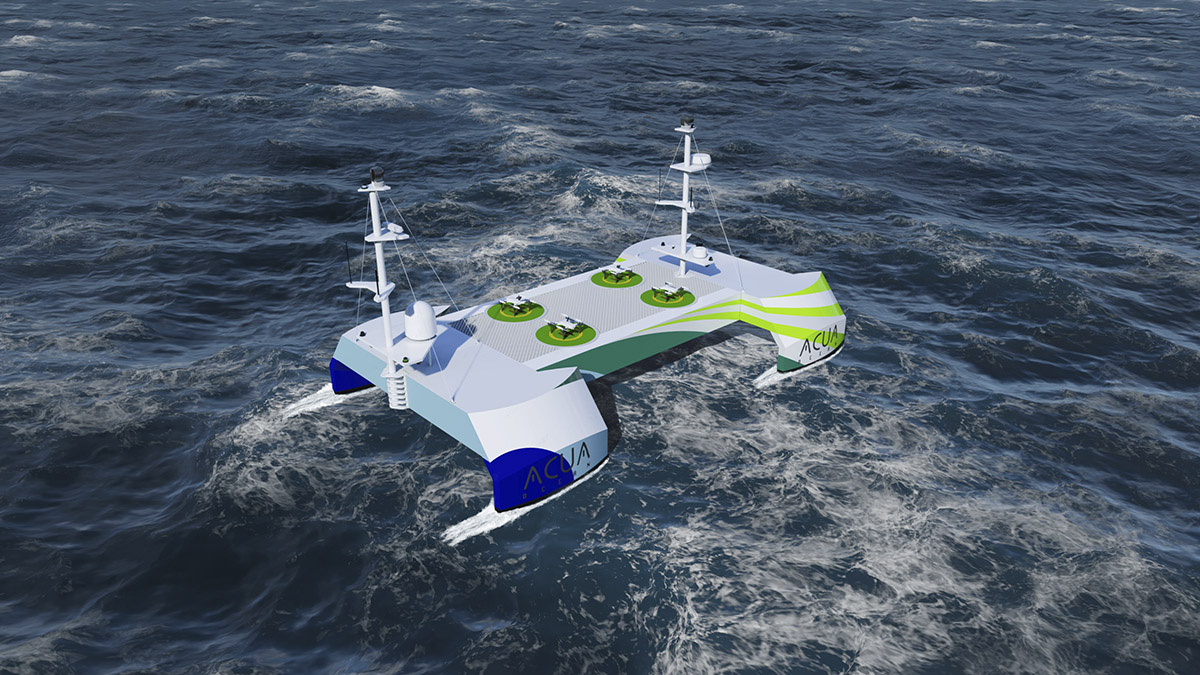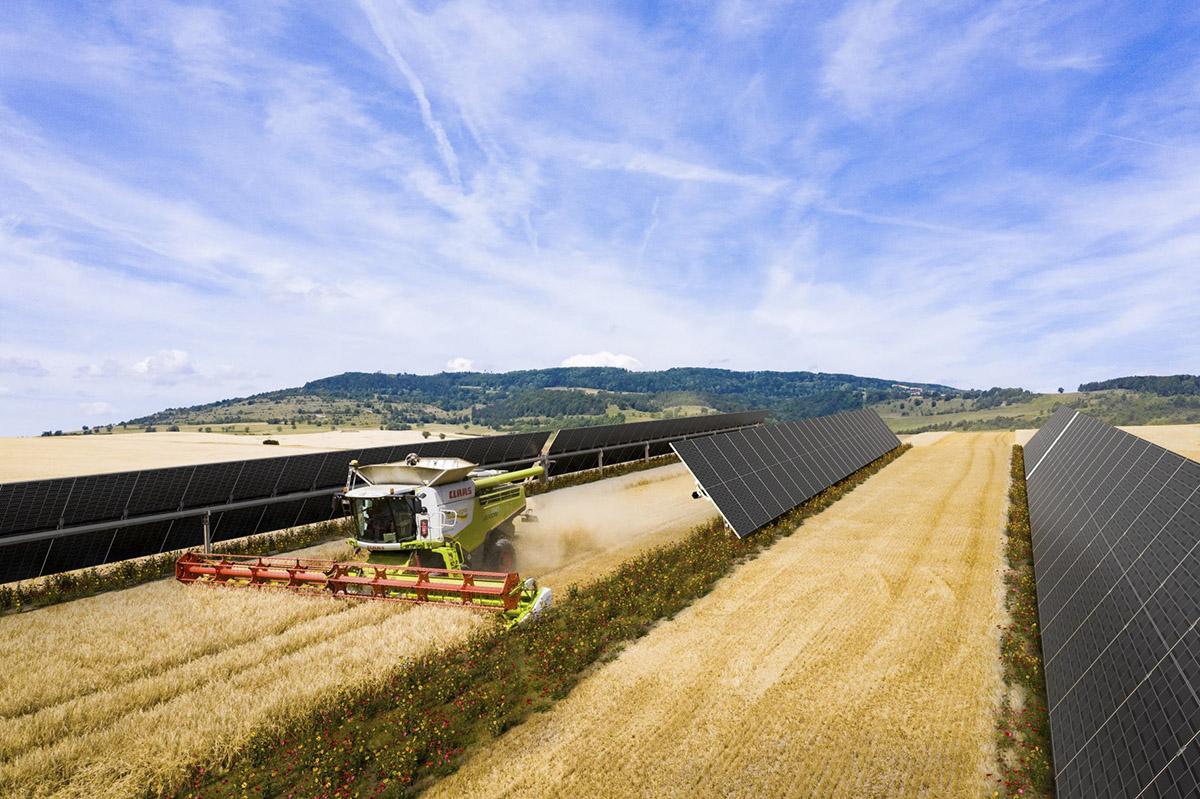“We can’t think electricity will solve everything” – why we need biogas
By Signe Hansen

Three years ago, the EBA was close to shutting its doors; today, the organisation has 150 members, including many large international corporations, and a strong voice in Brussels - it is really getting very interesting now,” says vice-president Michael Niederbacher.
At one and the same time fundamentally simple yet incredibly multifaceted, the role of biogas is still somewhat controversial. However, in the form of biomethane, bio-LNG, or biofertiliser, the products of anaerobic digestion (AD) could reform many sectors. We talk to one of the industry’s most passionate advocates and ask him why, with the EU 90 per cent dependent on imported fossil gas, biogas is still discredited by many.
Ever since he opened his first biogas plant in Italy in 2002, Michael Niederbacher, vice-president of the European Biogas Association (EBA) and CEO of TerraX, has made it his mission to further the AD and gasification technologies that can help decarbonise our society.
However, while he has opened 220 AD plants in 12 countries all over the world, Niederbacher is still not quite content; he wants more. First and foremost, he wants the world to understand that biogas is, and can be, much more than just a minor contributor to the electricity and heating market.
In short biogas and AD, is, says Niederbacher, “the best, most efficient and cheapest way to save CO2 in the energy, agricultural and transport sector.”
“For ten years, I have been driving a methane car, and that’s where I see the greatest potential for biogas in the near future, in bio-LNG [liquid bio-methane fuel] for heavy transport vehicles. Then next, it will be the maritime sector, then aviation and, lastly, hydrogen production; that is if politicians understand the potential.”
However, as Niederbacher admits, the message is not always easy to get across, partly because the technology and its advantages are far more complex than a first glance reveals. “I think the first challenge is that biogas and AD seem too simple to be true – you put in biomass, heat it up, and then you get this big amount of energy – people say it is not possible.
I think another issue is that like with other renewables, until recently, politicians just weren’t that interested,” says the CEO, who comes from an agricultural background, adding. “But the biggest problem we have, and always have had, is the perceived competition between food, feed and energy.
On the one hand, it is understandable because if you are not an expert in agriculture, it is normal to think that you can produce only food, feed or energy; but it is misunderstood – we do have solutions.”
However, while politicians may have been slow to come around to the benefits of biogas, new studies support the potential of significant biogas expansions. Studies made by the European Commission, IEA and Gas for Climate assess that in 2030, 35-44bcm (billion cubic metres) of the approx.
450bcm of gas in the EU’s gas grid could be biomethane (currently, only three of the approx. 18bcm of biogas produced in Europe is biomethane which can be injected into the gas grid). With biomethane offering the possibility of saving up to 202 per cent of GHG emissions compared to fossil fuels, the impact would be significant.

Michael Niederbacher, vice-president of the EBA and CEO of TerraX.
But don’t we need food more than energy?
One of the countries demonstrating that great leaps in biogas production is possible, is Germany. Home to nearly 10,000 of Europe’s 20,000 biogas plants, the country is estimated to be the biggest commercial producer of biogas in the world (though China has numerous small village- or even household-scale digesters).
This is partly due to an extensive use of energy crops, something which is, says Niederbacher, less controversial than it sounds. “People don’t remember the situation 30 years ago, but it was unsustainable; there was a surplus of food produced, and the state was buying up corn and exporting it cheaply to Africa, destabilising the local economies there.”
As a solution, around 15 per cent of the country’s agricultural land was taken out of production under the EU’s set-aside policy, and farmers were paid to lay the land fallow. Today, around 70 per cent of the feedstock for the country’s biogas plants comes from energy crops grown on the previously fallow land.
But the use of fallow land is not the only solution to what could be a conflict between the need to grow either feedstock, feed or food. “The second great leap we saw in solving this conflict was the development of technologies to use different feedstock. We now have the treatment needed to enable the use of feedstock like straw.
Basically, we can use what the land gives us, all biomasses that you can imagine, not wood but all plants. On our list we have more than 200 feedstock types,” explains Niederbacher.
This also means that feedstock can be grown on all land, also in combination with food crops like it is done in, for instance, Italy, where legislation requires farmers to alternate from food or feed to energy crops. Indeed, second cropping is, says Niederbacher, a necessity if we want to save the planet.
“If you get in a plane in wintertime, you will see that most of the land is not covered with crops, and if we want to save this planet, we need to increase the efficiency of photosynthesis – we cannot afford that the sun is shining, and we are not producing biomass. We need to cover the land with crops that increase biodiversity, increase the number of insects, and lessen aeolian erosion.”

Compared to EU fossil fuels, biogas production can, when the entire cycle of production is taken into account, save up to 240 per cent of GHG (greenhouse gas) emissions; biomethane up to 202 per cent, and Bio-LNG can reduce emission by more than 80 per cent compared to fossil fuels, or even be carbon neutral or negative if produced from manure.
So, how does it make the agricultural sector greener?
When it comes to the agricultural sector, biogas does not just offer reduced erosion and increased biodiversity but also the transformation of waste products such as straw and manure into energy. On top of that, Anaerobic digestion has two more significant benefits.
Most significantly, a by-product of AD is digestate, a natural biofertiliser. “Of course it is desirable to be independent from the fossil fuel markets, but also from fertiliser prices.
Normal production of fertiliser produces CO2, and it is dependent on phosphorus, so we need another way to balance the agricultural production, and AD production of biofertiliser is 100 per cent biological,” stresses Niederbacher.
With current phosphorus deposits predicted to be depleted within 50-100 years, and many regions already unable to afford the use of phosphorus for land cultivation, this is a significant point when talking sustainable agricultural production. But there is another equally compelling argument to be made.
The inclusion of feedstock crops, such as catch crops and cover crops, into food crop rotation can help rebuild humus in the soil, essential for plant growth and, crucially, carbon storage.
“Agriculture is facing a critical decade, so it would be a good moment to open up the discussion to include the soil. Contrary to what people might think, if AD is done in an organic and sustainable way, it will actually enrich the soil instead of depleting it, increasing carbon content, humus and nutrient value, something which is highly needed in Europe.
In other words, we can take CO2 out of the atmosphere through photosynthesis and biomass production and increase the CO2 that is returned into the soil through the cover plants and digestate biofertiliser.
In this way, we have a BECCS – bioenergy carbon capture and storage – plant in a very efficient and cheap way,” says Niederbacher, and rounds off: “The solution to the climate crisis, in my opinion, is not far away – it is in the soil.”
But aren’t there other more efficient renewable energy technologies?
While the potential of scaling up a sustainable biogas production is well documented, the question remains if biogas is financially viable if, and when, subsidiaries are phased out. This greatly depends on the application of biogas.
Traditionally, most biogas sites were built as CHP plants with a combined heat and electricity production. In recent years, however, most new plants are upgrading biogas to methane for the transport sector, and the EU production of BioLNG is set to increase tenfold by 2030.
“This will be the future,” says Niederbacher. “Bio-LNG or -methane for trucks. Then starting from 2025, when the maritime sector is to be included in the EU’s emissions trading system, I think that is where we will see the sector develop. Then, in the future, aviation.”
As LNG heavy-duty transport in Europe is expected to reach 280,000 units in 2030, such an increase could prove essential in the journey towards reaching net zero in 2050. In fact, using a 40 per cent BioLNG mix with LNG would reduce the CO2 emissions from those trucks by 55 per cent, and this would only account for approx. ten per cent of Europe’s possible total BioLNG production.
In the maritime sector, a 20 per cent BioLNG mix in large LNG-fuelled container vessels would reduce CO2 emissions by up to 34 per cent. As BioLNG can be transported using the existing LNG infrastructure, this would require no further technological adaptations or additional costs.
Together with the still lower prices of electricity and heat produced from wind and solar energy, this means that this is where many see the future of biogas. “The first biomethane plant we built was in 2015, but from that moment on, we have built more biomethane plants than biogas because the future is in the molecule, not in electricity,” Niederbacher stresses.
Can it help prevent the climate crisis?
Taking all of the above into consideration, it is hard not to agree with Niederbacher that the apparent simplicity of biogas is slightly deceiving. There are its multiple uses, multiple feedstocks, various ways of growing or collecting feedstock, multiple ways of using the by-products of AD, its effect on the soil, and not least its role on the renewable energy market to take into consideration.
But with electricity constituting only around 20 per cent of the EU’s primary energy usage, it is clear that a mix of energy sources are needed even if the share of electricity increases to 40 per cent as it is expected to in 2050. “The political class needs to change because we cannot think electricity will solve all the problems – we need to work together,” stresses Niederbacher.
Biogas – facts and keywords
Biogas can be produced via a biochemical process called anaerobic digestion of different kinds of biomass; the biomass used in a biogas plant is also referred to as feedstock.
Possible feedstocks can be wastewater products, manure from agricultural production, organic industrial, agricultural and household waste, energy crops or any mixture of the above.
Catch and cover crops are energy crops planted between two regular crops grown in consecutive seasons or between two rows of regular crops in the same season. The crops help prevent nutrient leaching and soil erosion and increase carbon sequestration.
They include a wide range of grasses, legumes and cereals, rape, turnips, millet, white sweet clover, sudan grass etc. The main components in biogas are methane (CH4) and carbon dioxide (CO2). When separated from the carbon dioxide, bio-methane, can be injected into the natural gas grid.
Another form of biogas is Bio-LNG, a biofuel. To make bio-LNG, the methane is separated from the carbon dioxide and then liquefied. This process increases the energy density 600 times and makes the biofuel ideal for heavy-duty and maritime transport.
Currently, over 60 per cent of biogas production capacity lies in Europe and North America. As the leading biogas-producing region, Europe has around 20,000 biogas plants, with the majority situated in Germany.
Biogas can also be upgraded to hydrogen through steam reforming, a controlled combustion-free process involving heat, steam and oxygen. In 2050, the Gas for Climate and Eurogas studies estimate, the potential is for 95bcm of bio-methane to be produced, covering 30-40 per cent of the expected gas demand in Europe.

Biogas – facts and keywords Biogas can be produced via a biochemical process called anaerobic digestion of different kinds of biomass; the biomass used in a biogas plant is also referred to as feedstock. Possible feedstocks can be wastewater products, manure from agricultural production, organic industrial, agricultural and household waste, energy crops or any mixture of the above. Catch and cover crops are energy crops planted between two regular crops grown in consecutive seasons or between two rows of regular crops in the same season. The crops help prevent nutrient leaching and soil erosion and increase carbon sequestration. They include a wide range of grasses, legumes and cereals, rape, turnips, millet, white sweet clover, sudan grass etc. The main components in biogas are methane (CH4) and carbon dioxide (CO2). When separated from the carbon dioxide, bio-methane, can be injected into the natural gas grid. Another form of biogas is Bio-LNG, a biofuel. To make bio-LNG, the methane is separated from the carbon dioxide and then liquefied. This process increases the energy density 600 times and makes the biofuel ideal for heavy-duty and maritime transport. Currently, over 60 per cent of biogas production capacity lies in Europe and North America. As the leading biogas-producing region, Europe has around 20,000 biogas plants, with the majority situated in Germany. Biogas can also be upgraded to hydrogen through steam reforming, a controlled combustion-free process involving heat, steam and oxygen. In 2050, the Gas for Climate and Eurogas studies estimate, the potential is for 95bcm of bio-methane to be produced, covering 30-40 per cent of the expected gas demand in Europe. Web: www.europeanbiogas.eu
Subscribe to Our Newsletter
Receive our monthly newsletter by email





